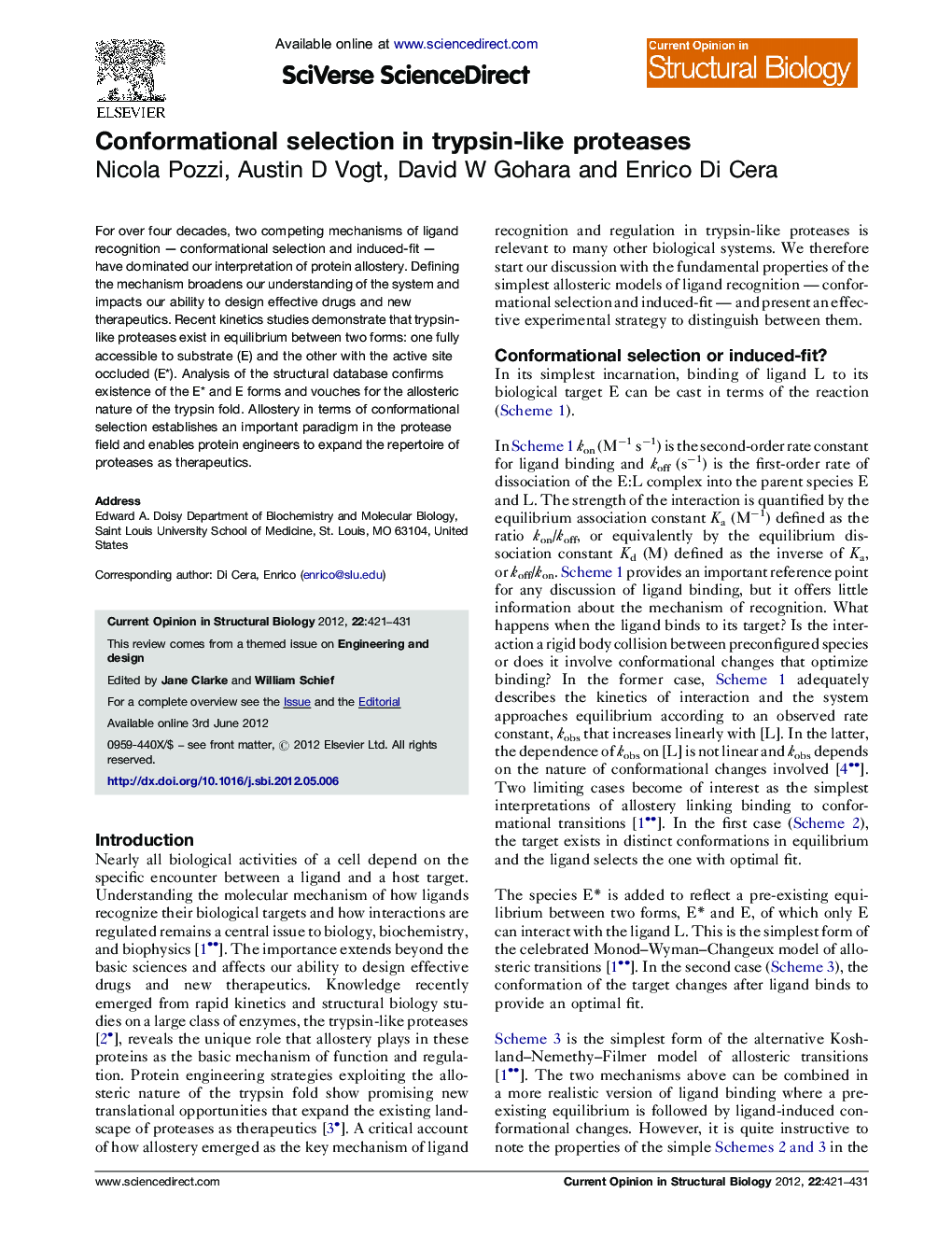| Article ID | Journal | Published Year | Pages | File Type |
|---|---|---|---|---|
| 1979101 | Current Opinion in Structural Biology | 2012 | 11 Pages |
For over four decades, two competing mechanisms of ligand recognition — conformational selection and induced-fit — have dominated our interpretation of protein allostery. Defining the mechanism broadens our understanding of the system and impacts our ability to design effective drugs and new therapeutics. Recent kinetics studies demonstrate that trypsin-like proteases exist in equilibrium between two forms: one fully accessible to substrate (E) and the other with the active site occluded (E*). Analysis of the structural database confirms existence of the E* and E forms and vouches for the allosteric nature of the trypsin fold. Allostery in terms of conformational selection establishes an important paradigm in the protease field and enables protein engineers to expand the repertoire of proteases as therapeutics.
► Ligand binding to trypsin-like proteases obeys conformational selection. ► Trypsin-like proteases exist in two forms in equilibrium: E* (inactive) and E (active). ► E* and E have been trapped under the same solution conditions. ► The E*–E equilibrium offers new strategies for therapeutic intervention. ► Anticoagulant thrombin mutants are stabilized in the E* form.
